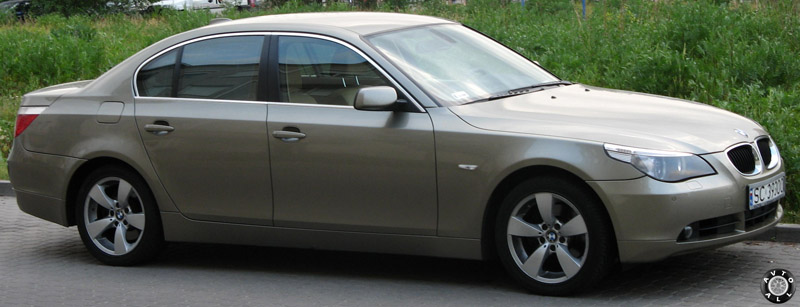IN automotive world There are many myths about motors that do not break. These legends are rooted in the confrontation between German, Japanese and American engine builders. But most importantly, these "fairy tales" are not really fairy tales. "Indestructible" motors have long been among us.
Gasoline "fours"
The most common "fours" can boast an enviable life expectancy. This is especially true for three motors that are rightfully considered legends.
Mitsubishi 4G63
The 2-liter engine appeared back in 1982. But even now its licensed copies are assembled at factories, not only in Japan, but in China.
Initially, the power unit was equipped with only one camshaft, and there were three valves per cylinder. This version was called SOHC. Five years later there was new variation with two camshafts. She received the name DOHC.
Various modifications of this engine were installed not only on Mitsubishi, but also on Korean Kia and Hyundai. Now the “Chinese” Brilliance is busy with the production of the veteran.
Toyota 3S-FE
The 3S-FE engine is considered one of the most reliable and durable. For the power units of the 90s, it was quite ordinary: four cylinders, sixteen valves and a 2-liter volume. The number of "horses" varied from 128 to 140.
This unit was equipped with the most popular Toyota models. For example, Camry from 1987 to 1991, Carina from 1987 to 1998, Avensis from 1997 to 2000, RAV4 from 1994 to 2000.
With good and timely service motors can easily “run back” 500,000 kilometers without major repairs. And there will still be a margin of safety. A distinctive feature of the 3S-FE, in addition, is good maintainability.
Honda D series
These motors stopped producing exactly ten years ago. But in twenty-one years of production, they have proven themselves from the best side.
There were about a dozen different variations of the power unit, with a volume from 1.2 liters to 1.7. Power reached the "herd" of 131 "horses", and the working speed was approaching the mark of 7,000.
Equipped with these Civic engines, Accord, Stream, HR-V and Akurov's Integra.
Before the overhaul, the engines "lived" 400-500 thousand kilometers. And the thoughtfulness of the unit allowed after the "reincarnation" to run back about the same amount.
Petrol "sixes"
Among these engines, there are also quite a few long-lived heroes. Just a simple enumeration will take several pages of text. Therefore, we will focus on the most popular pair.
1968 is known not only for the XIX Summer Olympic Games in Mexico City and the loss of the US Air Force in Greenland of the atomic bomb, but also for the birth of legendary motor M30. It was produced in various versions until 1994.
Engine capacity varied from 2.5 to 3.4 liters, power - from 150 to 220 "horses".
The secret of reliability lay in the classic design of the motor: cast iron block, timing chain drive, 12-valve block head - made of aluminum. The M30 also has a turbocharged relative - the M102B34 with a capacity of 252 "horses".
Equipped with M30 engines, cars of three series at once: the fifth, sixth and seventh.
And now in ads about sale of BMW you can meet a car with this particular power unit. A mileage of 400,000 kilometers without overhaul— an indicator worthy, but not limiting. M30 can plow all 500,000.
Toyota 1JZ-GE and 2JZ-GE
These Japanese engines have been produced for 17 years, from 1990 to 2007. The first is 2.5 liters, the second is 3 liters. They also had supercharged modifications under the indices 1JZ-GTE and 2JZ-GTE.
In our country, these power units are most widely used in the Far East. After all, it was there that the most “old-school” right-hand drive “Japanese” were listed.
Such motors were equipped with Supra, Chaser, Soarer, Crown and Mark II, as well as GS300 and Lexus Is 300 brought from America.
The resource of engines from the Land of the Rising Sun is truly enormous. There are cars whose motor honestly worked for a million (!) Kilometers before going for overhaul.
Diesel centenarians
Diesels were originally famous for their reliability. Moreover, the first generations of power units operating on “heavy” fuel had a more or less simple design, and therefore a serious margin of safety.
Mercedes-Benz OM602
Stuttgart engines were produced from 1985 to 2002, and did not cause any complaints. On the contrary, their reliability and durability, regardless of mileage and operating conditions, have given rise to many legends.
In technical terms, they are simple: five cylinders, each of which has two valves, and an in-line high-pressure mechanical fuel pump from Bosch.
By the way, the motors did not differ in power - they gave out only 90-130 "horses", depending on the variation.
They were put on the W124, W201, G-class, T1 and Sprinter models. Found them and more new model W210.
With timely maintenance, engines can easily withstand a mileage of a million kilometers before major repairs. And if you believe the legends, then the OM602 is able to run back even 2 million.
For ten years - from 1998 to 2008 - these engines were put under the hoods of almost the entire BMW line, from the 3rd series to the 7th. Their power ranged from 201 to 286 "horses". By the way, they came across in English range rover.
A distinctive feature of the M57 was the amazing dynamics for a diesel engine. Cars equipped with this engine simply broke the stereotypes about power units on "heavy" fuel. For example, the 330D model (E46 body) was perceived as a real lighter car. Therefore, most often it was bought by fans to drive. And high reliability and maintainability only added pluses to the car ...
What is the best engine? This question can be called eternal. Car owners and experts are constantly arguing: some point to German quality, for others there is nothing better than products Japanese car industry, others say that most reliable engines in the world is the prerogative of the United States. To get closer to solving this dilemma, we decided to rank the most reliable and durable engines.
Make a list the most reliable engines passenger cars mobiles it was not just last years the industry has developed so much that a lot of worthy motors have been created. Therefore, we have chosen the ten most popular and frequently encountered million-plus engines.
Diesel units
Diesel engines have always been considered the most reliable. Such motors are preferred by drivers, most of whose life takes place on the road. After all, such engines work under any conditions, and their simple design has excellent strength.
Mercedes-Benz OM602

The family of diesel five-cylinder engines OM602 deservedly holds the first position in terms of mileage, durability and the number of cars left with them on the go. These diesel million-plus engines were produced for about twenty years - from 1985 to the beginning of the 21st century. Such engines are not too powerful - only 90-130 hp. with., but at the same time, they have earned the reputation of reliable and economical engines.

You can meet OM602 in Mercedes cars in the back of W124 and W201, on G-class SUVs, T1 and Sprinter vans. The mileage of many representatives exceeds 0.5 million kilometers, and the record holders have seen two million kilometers on their way.
BMW M57
The engines of the Bavarian manufacturer are in no way inferior to their Stuttgart counterparts and are also considered the most reliable engines. Six-cylinder diesels from BMW impress with their reliability and have a lively disposition. It was these diesels that changed the minds of many about diesel type motor. A car equipped with the M57 is more than just a car.

The power of such a motor various options varies from 201 to 286 horsepower. Motors were produced for ten years - until 2008, all the best Bavarian models were equipped with the M57. Some Range Rovers also had M57 diesels.

The ancestor of the legendary M57 was the equally powerful, but not as well-known M51. It was produced from 1991 until the beginning of the 21st century. Mechanics agree that such motors are very strong and reliable, because, with the exception of minor breakdowns, they operate smoothly for about 500 thousand kilometers.
Inline petrol "fours"
Gasoline engines are more familiar to us. They are arranged much more simply, that is, they can be repaired in “home” conditions, and they are more loyal to the weather. Therefore, in our rating there are even relatively small classic motors.
Toyota 3S-FE
Among gasoline engines, the palm went to Toyta 3S-FE. This typical representative of the S series is considered one of the most reliable and easy to handle units. 3S-FE has a volume of 2 liters, it has 16 valves and four cylinders. Agree specifications are fairly typical. But the 3S-FE did its job. The power of such a motor was 128-140 hp. from. This motor became a successful prototype for its followers and was installed on many years various models Toyota.

According to mechanics, this unit has an amazing ability to withstand high loads and unsightly service, its repair is very convenient, and the design as a whole is well thought out. If this engine is well maintained, its resource will be enough for 500 thousand kilometers, and during this time major repairs will not be needed. Even minor breakdowns in this motor are very rare.

This two-liter unit runs on gasoline and is a prominent representative of the famous Japanese family. Its first version was published in 1982, and analogues continue to be produced even now. Initially, such engines were produced with a single camshaft and had three valves per cylinder. However, in 1987 they released an improved version with two camshafts.

The newest varieties of 4G63 until 2006 were installed on Mitsubishi Lancer Evolution IX. Recently, this famous motor is not only the prerogative of Mitsubishi, it can be found under Kia hood, Hyundai and even Brilliance.

Over a long period of production, the engine has been upgraded many times, its newest versions are equipped with a timing system for adjusting the timing, as well as more complex systems boost and power supply. This slightly reduced the reliability of the motor, but it became much more convenient to repair it. If such an engine does not overcome the milestone of 1,000,000 kilometers, then it will still give odds to competitors.

Another family of "indestructible" engines - the Japanese D series from Honda, includes more than ten different units of 1.2-1.7 liters. They have been in production for over twenty years. The most durable model was the D15, however, the rest of the family members are very tenacious. The power of representatives of the D series reaches 131 horsepower.

Operating speed up to 7000. Such motors were installed on HR-V, Civic, Stream, Acura and Accord. It was possible not to worry about the overhaul of such an engine for at least 350 thousand kilometers, and with careful handling - even 500 thousand.
Opel 20ne
The list of the most successful "fours" closes the representative of the European giant of engine building - the Opel x20se. He is like bright representative family GM Family II, proved to be a longer service life than the cars on which it was installed. The secret of its performance is in a simple design and a primitive system. multipoint injection.

As well as successful creations Japanese manufacturers, the volume of x20se is two liters. The power of various variations is 114-130 horsepower. Such motors have been produced since 1987, and their production was stopped in 1999. Usually such motors were faithful companions of Kadett, Astra, Vectra, Frontera, Omega, Calibra, Australian Holden, as well as Buick and Oldsmobile from the USA.

A sixteen-valve model - C20XE - a couple of years ago stood on Lada and Chevrolet cars in the WTCC racing championship, and its turbocharged version C20LET - took part in the rally. A careful attitude to the engine will allow it to overcome a million kilometers, and if you load the engine, it will still be enough for a record six hundred thousand. Sixteen-valve varieties are not so long-playing, but still will not force their owner to do repairs often.
V-shaped "eight"
V8 engines cannot be called "eternal", but their resource is long enough, so, Cars usually equipped with just such motors. The reliability of V-shaped units is manifested in the fact that they do not annoy the owners even with minor malfunctions, and can also cross the half-millionth threshold of kilometers without much strain.

Bavarian motors are again in our rating. The first passenger V8 was a success for the manufacturer: a nickel coating for cylinders, a strong two-row chain, and a good power reserve. This engine was called resource, because every detail is made to last. The use of nickel-silicon coating for cylinders made such a motor almost indestructible. Half a million miles for such a workhorse is a trifling matter, and after such a test in the engine, you don’t even have to replace the piston rings.

Simple design, high power level, excellent margin of safety allows the car owner not to think about repairs. Later models of motors, for example, M62, have a more complex design, but are more durable.
Petrol in-line "sixes"
It may seem amazing fact, but, nevertheless, it's true - some six-cylinder engines are able to overcome the millionth barrier. Relatively simple design, lack of vibration and good power made such motors very reliable.
Toyota 1JZ-GE and 2JZ-GE
The creations of the Japanese automobile industry have a volume of 2.5 and three liters, respectively. Long-term use of such engines has made them real legends. The formula for success is an excellent resource and a high-spirited attitude. Produced 1JZ-GE and 2JZ-GE from 1990 to 2007. During this time, even turbocharged models were designed - 1JZ-GTE and 2JZ-GTE. In our country, such motors have spread mainly in the Far East.

Most often, 1JZ and 2JZ were installed on Toyota Mark II, Supra, Soarer, Chaser, Crown, as well as american cars Lexus Is 300 and GS300 are not very popular in our region.

Atmospheric versions of such motors can overcome a million kilometers, and only then they will need repairs. These engines are made very high quality, and high performance is achieved due to the unpretentious design.
And again in our ranking brainchild of BMW. Without the Bavarian Six, the list of the best would not be complete. The history of such a popular M30 engine dates back to 1968. A long-liver among motors, this unit with minor modifications was produced until 1994!

The working volume of 2.5-3.4 liters and the power of 150-220 horsepower with a completely simple design made this engine one of the most popular. Sports units M88 were equipped with a "head" with 24 valves.
Like any reliable engine, the M30 has a turbocharged counterpart. Turbocharging is known to affect the rate of engine wear. But if the design has a margin of safety, usually designers tend to completely exhaust it. The M102B34 motor is an M30 with 252 horsepower.

Motors from the M30 family were installed on cars of the 5th, 6th and 7th series in several generations. Maximum possible mileage bavarian motor unknown, but one thing is clear: half a million for the M30 is a childish test. At a time when the M30 engines had just appeared, cars fell into disrepair before the engine wore out.
Engines from the M50 series have become worthy successors of the famous German traditions. The working volume of these engines is from 2 to 2.5 liters, and the power is 150-192 horsepower. As before, the cylinder block was made of cast iron, and the block head had only four valves per cylinder. Later versions of these engines were equipped with a tricky gas distribution system called VANOS.

Such engines may well repeat the achievements of their ancestors and easily overcome half a million kilometers without serious damage. The new generation, which includes the M52 motors, have a more complex design. Despite the fact that they also proved to be good, the number of breakdowns in them has become noticeably higher, but the resource has decreased.
Among motorists.
All these myths, not surprisingly, are echoes of the epic confrontation between Japanese, American and European concerns. But the most interesting thing is that these inventions are not inventions at all. Long-lived motors do exist.
Petrol "fours"
Yes it's true. Even ordinary “fours” can serve faithfully for a long time. But among them, three power units stand out, which bear the proud title of "legends".
Toyota 3S-FE

This motor is considered not only one of the most tenacious, but also a role model in terms of reliability. The 2-liter 3S-FE appeared in the late 80s of the last century and quickly became very popular. Although its design for those years was ordinary (16 valves, 4 cylinders, 128-140 hp), this did not prevent the engine from “registering” on the most popular Toyota models. These are Camry (1987-1991), and Carina (1987-1998), and Avensis (1997-2000), as well as RAV4 (1994-2000).
If the owner took care of the “steel horse” and serviced his “heart” in a timely manner, then the 3S-FE could easily and naturally “wind” 500 thousand kilometers. And even more. Moreover, even now cars equipped with these power units are not so rare. On some, the mileage even exceeds 600-700 thousand. And this is without a major overhaul!
Honda D series

Honda engines have been retired for 10 years now. And before that, there were 21 years of production, during which the “engines” worked for the “five” with a plus.
There are about ten variations of the D-series. The volume started at 1.2 liters and ended at 1.7. The “herd of horses” reached 131, and the revolutions were approaching 7 thousand.
These engines went to the Honda HR-V, Civic, Stream and Accord, as well as to the Integra, produced under the Acura banner.
Longevity Japanese motors just amazing. For them, "running back" for almost a million kilometers without a major overhaul is not a problem. And after the “treatment”, the resource of the engines did not change significantly.
BMW M30

In 1968, several significant events took place at once. Among them - the appearance of a landmark for all fans bmw engine M30. It was produced until 1994 in various variations.
The volume of the power unit ranged from 2.5 liters to 3.4, while the number of "horses" varied from 150 to 220.
As you know, everything ingenious is simple. So the M30 was brilliant in its simplicity. 12 valve aluminum block head, cast iron block, chain timing. They also produced a “charged” version of the unit - a turbocharged one with a capacity of 252 hp.
Equipped with this force BMW unit 5th, 6th and 7th series.

Even now, the M30 has not left the automotive scene. Among the ads for the sale of used Bavarians, you can find cars with just this engine. A run of up to 500 thousand kilometers without a major overhaul for the M30 is not the limit. It can "run back" and more, most importantly, timely service.
BMW M50

This engine has become a worthy successor of its kind. The volume of the M50 varied from 2 to 2.5 liters, and the "herd of horses" was 150-192.
Interestingly, the cylinder block was still cast iron, but there were already 4 valves per cylinder. As this engine evolved, it acquired a kind of gas distribution system, which everyone knows under the name VANOS.
In general, the M50 could easily "wind" 500-600 thousand kilometers without a major overhaul. But his M52 receiver cannot boast of such results. It was a very complex design. Although the new generation of motors is good, the frequency of breakdowns and the overall resource cannot be compared with the M50.
V-shaped "eight"
V8 engines have never been known for some fantastic margin of safety. It is understandable, because their design is specially lightened and obviously more complex.
But, despite this, in Bavaria they managed to design a power unit that can “pass” even 500,000 kilometers. At the same time, he does not annoy his owner with frequent breakdowns.
BMW M60

We are talking about this Bavarian creation. Everything is in its place in it: a chain in two rows and a coating of nickel-silicon (nikasil). Thanks to this arsenal, the cylinders turned out to be indestructible.
It is not uncommon for an M60 with a range of 400-500 thousand kilometers per technical condition remained practically new. In it, even the piston rings by this time were kept in very good condition.
And everything would be fine if not for one "but". This most nikasil coating, with all its obvious advantages, had one significant disadvantage - the absolute absence of sulfur resistance in the fuel. This played a cruel joke with the engine. Powertrains in the United States, where high-sulphur Canadian gasoline is common, have been especially hard hit. Therefore, over time, the nikasil coating was abandoned in favor of the alusil coating. Although it is just as hard, it is more sensitive to shock.
M60s were produced from 1992 to 1998 and went to the "Bavarians" of the 5th and 7th series.
D isel centenarians
It's no secret that diesels have always been famous for their durability and reliability. The main thing is that the "heavy" fuel should be of good weaving. And the first generation of such engines was not distinguished by the complexity of the design, which added significant mileage to the margin of safety.
Mercedes-Benz OM602

The engines rolled off the assembly lines in Stuttgart for 17 years (1985-2002). They did not cause any complaints or claims. Quite the contrary, almost poems were written about their reliability and maintainability, despite the mileage.
Since the advent of the first engine internal combustion power units evolved quite quickly. Thanks to the global popularization of motors of various manufacturers with each new version become more technologically advanced, productive and powerful.
Also, the reliability of the internal combustion engine has significantly increased compared to the first samples, in better side the most important characteristics changed, etc. At the same time, in the history of engine building at different stages, installations appeared that could be considered not just another engine with a number of modifications and improvements, but a real breakthrough.
In other words, such units, to a greater or lesser extent, had an impact on the auto industry as a whole. Next, we will talk about what are the best motors in the world at different times became the next starting point for further development and evolution.
Read in this article
Best Car Engine: Most Outstanding Motors

10. Let's start with the more familiar modern units, thanks to which today there has been a widespread reduction in displacement (downsizing) along with an increase in power and torque. It's not hard to guess that we are talking about .
At the same time, it should be emphasized Audi engine 1.8 T, which appeared in the distant 90s. This motor provided impressive performance with a relatively modest volume, and its appearance can be considered the beginning of a gradual abandonment of large-volume internal combustion engines.
power unit for its time, it turned out to be quite advanced technically, since simultaneously with turbocharging it received 5 valves per cylinder, a variable valve timing system, forged aluminum pistons and a number of other solutions.
9. In ninth place on the list was the (Wankel engine), which was finalized by Japanese engineers from Mazda for their sports models RX series. Since the advent of the two-section rotary piston motor 13V in 1975, this engine and its modifications later became the most massive RPDs in the world.
Thanks to a range of innovations rotary motor, which at the initial stage had only about 100 hp, later gave out about 300 "horses" on forced stock versions. The engine was equipped with a turbocharger, had an advanced fuel injection control system, etc.
Even taking into account the fact that such a unit has a reduced resource and consumes a lot of oil and fuel, it is distinguished by its low weight and working volume, spins up to 10 thousand rpm, and allows you to achieve a low center of gravity. Such features allowed the Mazda RX-7 with RPD to become the leader of the race in the 80s.
8. Next, we will talk about Chevrolet engine V8 from the Small Block line. This engine is found under the hoods of GM models and is the most massive "eight" of all time, since its modifications were installed on cars with minor changes from 1955 to 2004.
During this time, about 90 million of these internal combustion engines were manufactured, and the first versions were created for the legendary Corvette sports car as a replacement for the weak in-line six-cylinder unit.
IN various modifications this V8 did not have a volume below 4.3 liters. There are also versions with an impressive 6.6 liters. The engine is low because it was originally designed to fit under the hood of a Chevrolet Corvette.
At the same time, the engine turned out to be so successful that they then began to put it on all GM models, for which the presence of a V8 was assumed. The main advantages of this unit are performance, reliability, simple design, not particularly demanding on the quality of fuel and oil.
7. We got seventh place bmw motors, namely the row "six". Thanks to the efforts of German engineers, six cylinders arranged in a row became a symbol of an entire era, and also changed the idea of how a powerful and productive in-line engine should work.
The first "six" BMW appeared in 1968, and the legendary atmospheric racing S54 of 2000 on the BMW M3 became the crown. With a relatively modest volume of 3.2 liters, the engine produced 340 hp, which is an outstanding achievement for an aspirated engine.
At the same time, it was the Bavarians, even against the backdrop of the refusal of other manufacturers to install in-line 6-cylinder engines in favor of more compact V6s, despite everything, they continued to use the in-line ICE with 6 cylinders on their models for a long time and actively. Thanks to this solution, motorists around the world were able to appreciate the smooth operation, minimum vibration and the ability of the motor to quickly spin up to maximum speed.
6. Closer to the middle of the list was the legendary V8 HEMI, which was assembled from 1964 to 1971. The motor got its name due to the unique combustion chamber in the form of a hemisphere. At the same time, this motor should not be confused with those analogues of the same name that are produced today. The '64 version is a true sporty V8 with a displacement of 7.0 liters and an output of about 425 hp. An engine with a lower camshaft, has two valves per cylinder and a minimum of complex design solutions.
A distinctive feature of such an internal combustion engine was that these are really indestructible engines with an amazing margin of safety. The weight of the motor is about 400 kg, the design is very simple and extremely reliable, capable of withstanding extremely high loads, even with maximum forcing. It is not surprising that such an engine is very expensive today, as it is of particular value to street racing enthusiasts, athletes, collectors, etc.
5. The high-tech W16 engine, which was created to return Bugatti to the supercar market, deservedly takes the fifth place. This engine initially received a dizzying power of more than 1000 hp, being an evolution of Volkswagen's VR-shaped internal combustion engines.
The minimum angle of collapse of the cylinders (15 degrees) made it possible to put one on two rows of cylinders. Also the motor received unique system self-diagnosis to quickly find a problem in one of the 16 cylinders. As for the design, in addition to 4 turbochargers and several cooling radiators, titanium, an aluminum oil pump and other extremely expensive parts were also used.
As a result, the mass of the W16 is only about 400 kg, and the cost of manufacturing the engine does not matter, since the main task is to obtain the huge power and endurance of the internal combustion engine to achieve outstanding supercar performance. Bugatti Veyron and the hypercar Chiron with a dizzying 1500 hp.
4. The next engine that deserves special attention, we can consider the V8 from Ford, which is directly associated with cars from the United States and is a kind of hallmark of the entire American auto industry.
The fact is that the installation of such an internal combustion engine on mass models auto allowed the G8 to get as close as possible to the ordinary consumer, and not remain the property of the owners of exclusively expensive and “luxury” cars.
The V8 engine from Ford appeared in 1932, was much more massive than its counterparts from Europe, and often cost less. Thanks to the efforts of the Henry Ford company, two cylinder blocks and a crankcase were cast as a single piece. The crankshaft was not forged, but made by casting, after which the strength was achieved, in simple words by thermal hardening. Camshaft was in the cylinder block, the design of the motor was simplified as much as possible.
The result was a powerful, cheap and durable engine, which quickly took root among the masses thanks to its installation on many popular models. Also, it was on the basis of such engines that the culture of tuning an automobile internal combustion engine was born, since the Ford V8 could be easily.
This is how the first “charged” versions appeared, better known today as hot rods, and the 8-cylinder engines themselves became not just a standard, but actually a symbol of cars from the USA.
3. In third place on our list of engines that have contributed to history and influenced the global engine industry, the engine deservedly gets. The most famous manufacturers of internal combustion engines of this type is Volkswagen (Porsche) and Japanese Subaru with their Boxers.
Huge popularity and recognition at the initial stage, the "opposite" received since the time of the pilot parties in 1933 on Volkswagen models Beetle, and the release of improved versions ended only in 2006. The engine initially had air cooling, the unit turned out to be as simple as possible, distinguished by reliability, acceptable power and unpretentiousness.
As for the Japanese, the Subaru brand actually relied on such a layout. As a result, boxer engines from Japan turned out to be compact, light, the level of vibrations is reduced, the center of gravity allows for excellent weight distribution and vehicle handling.
Even with the complexities of maintenance and repair, Subaru boxer engines are well-deservedly popular due to a number of unique features. By the way, the boxer is evolving further, Subaru was introduced not so long ago.
2. In second place is the so-called. Recognized leaders in this area is Toyota. The company's engineers built a unique symbiosis of an electric motor and a familiar internal combustion engine, thereby significantly reducing fuel consumption and toxic emissions in atmosphere.
At the same time, a hybrid engine even today looks like a more preferable option against the background of active development, which are completely devoid of an internal combustion engine.
As an example, the well-known Toyota model Prius or premium Lexus Hybrid. In these models, the gasoline engine has a high compression ratio and is tuned to work in tandem with an electric motor. The transmission for hybrid cars is also a whole group of complex engineering and design solutions.
IN in general terms, for start and at low speed, the traditional internal combustion engine on hybrid cars is not involved, the electric motor, which is powered by electric batteries, is responsible for the rotation of the wheels. If the driver needs more power, then after starting from electric traction at a certain speed, the internal combustion engine is connected, which, together with the electric motor, further effectively accelerates the car. Parallel while working petrol plant batteries are also charged.
The best motor of all time in the automotive industry

So, the well-deserved first place and the honorary title of "the most best engine in the world ”in our list receives a power unit that was installed on the Ford Model T. This engine can be considered the most common engine on the planet, which significantly influenced the development of not only the automotive industry, but our entire civilization.
The fact is that in addition to the Ford T model itself, this power unit stood on trucks, boats, was used as a driving force for electric generators, etc. The working volume was 2900 cm3, 4 cylinders, the power was only 20 hp, while the unit produced a good indicator of torque and was extremely unpretentious in terms of fuel quality. The power plant successfully ran on kerosene and even ethanol.
However, this is not all. The main trump card is the ultimate simplicity of design. The planetary two-stage gearbox was integrated into one unit with the internal combustion engine, the oil for the engine and gearbox was common. Itself did not assume the supply under pressure, the lubricant fell on the parts by spraying.
List of the most reliable gasoline and diesel engines: 4-cylinder power units, in-line 6-cylinder internal combustion engines and V-shaped power plants. Rating.


For the attention of motorists are presented most reliable car engines according to experts.
Powertrain Series AWM open the top ten most reliable motors for cars. They were first created in 1987 and until now these motors are extremely popular on many German-made cars - Volkswagen, Audi and many others. AWM are durable, reliable and unpretentious. by the most powerful engines from the AWM series are APG and AWA motors. The first engine is eight-valve with Digifant injection. Its volume is 1.8 liters, the power is high - 160 hp. with a torque of 228 Nm / 3800 rpm. Most wide application this power unit found in cars Volkswagen Passat B5. The second motor is a much larger volume - 2.8l. At the same time, its power is 175 hp. at 240 Nm/4000 rpm

Mercedes M266 is one of the most reliable engines for passenger cars. The 4-cylinder petrol engine is an evolution of the previous M166, known from first A-Class and Vaneo. The engine received a specific design, as it had to be placed at a large slope in a close engine compartment. The engineers relied on simplicity: only one timing chain and 8-valve gas distribution mechanism. Mechanical very reliable. Injector malfunctions are very rare.
Suzuki DOHC M

Engines Suzuki DOHC"M" located on the eighth line in the list of the most reliable engines. The power units of the "M" series include small-capacity motors 1.3, 1.5, 1.6 and 1.8. The latter is exclusively for the Australian market. On the European continent, the power unit is found in almost all small and medium Suzuki models that appeared at the turn of the 20th and 21st centuries, and in the Fiat Sedici 1.6, which is a copy of the Suzuki SX4. The mechanical part of the engine is very reliable and durable. Even the VVT variable valve timing system, which is used by most engine modifications, is not satisfactory. It is not only in the 1.3-liter version, designed for Ignis and Jimny until 2005, and the old 1.5 modifications for the SX4. chain drive Timing belt is very reliable. Among the minor flaws, small oil leaks through the stuffing box can be noted. crankshaft. More serious malfunctions are almost never encountered.

Honda D— series ranked seventh in the top of the most reliable engines for passenger cars. Honda's D-series is, first of all, the legendary D15B and all their modifications. First of all, it is worth considering precisely these motors, which had greatest influence on the development of single-shaft engines in the world. The Honda D-series engine is an almost perfect design. Transversely mounted in the engine compartment in-line four, rotating according to the “laws of Honda”, counterclockwise with a belt drive. The fuel mixture was supplied through a carburetor, through two carburetors (a unique development from Honda), through a mono-injection system (supply of atomized fuel to the intake manifold), as well as injection supply. Moreover, all these options met simultaneously in one model. The reliability of this series has become the standard for simple single-shaft engines. They were produced from 1984 to 2005.

Mitsubishi 4 G63 is one of the best and most reliable motors for passenger car. The first modification 4G63 appeared back in 1981, and with small changes continues to be produced to this day. Excellent technical characteristics of this motor are combined with its excellent reliability. Engines of the 4G63 family are four-cylinder power units that have a volume of 2.0 liters and power from 109 to 144 horsepower. The 4g63 engine has a cast iron cylinder block and an aluminum head for maximum heat resistance.

Toyota 3 S— F.E.- one of the most reliable engines for passenger cars. Modification 3S FE was one of the first Toyota with direct system fuel injection. The use of an injector made it possible to significantly improve the power characteristics of the new motor, its work on idling, also in comparison with the carburetor version of this engine, fuel consumption has been significantly reduced. Myself Toyota engine The 3S FE is actually an upgraded version of the 3S, so it retains its legendary reliability and relative simplicity of design. A feature of this power unit is the presence of two ignition coils, which improves the quality of flammability fuel-air mixture. The 3S engine works confidently on 92 and 95 gasoline. Depending on its version, the power indicator can range from 115 to 130 horsepower. The motor shows the maximum torque already from the very bottom, so the car owners did not experience a lack of traction.

Included in the top ten most reliable engines for passenger cars. This member of the GM Family II engine family became famous for often outliving the cars it was installed on. Simple design: 8 valves, camshaft belt drive and simple system distributed injection are the secrets of longevity. Power different options ranges from 114 to 130 hp. Motors were produced from 1987 to 1999 and installed on models such as Kadett, Astra, Vectra, Omega, Frontera, Calibra, as well as Australian Holden and American Buick and Oldsmobile. In Brazil, they even produced a turbocharged version of the engine - Lt3 with a capacity of 165 hp.
BMW M60

bmw M60 opens the top three most “indestructible” engines for a passenger car. The use of a nickel-silicon coating (Nikasil) makes the cylinders of such a motor virtually wear-free. By half a million kilometers, it is often not necessary to change even the piston rings in the engine. simplicity of design, high power, a good margin of safety puts the M60 among the best.

bmw M57 included in the list of the most reliable engines for passenger cars. The power unit was designed by BMW and its production began in 1998. The motor has several of its modifications, changes and improvements were made as performance was studied, and not all implemented engineering improvements had the same effect on the reliability of the unit. The main innovation of this engine was the injection system diesel fuel « common rail", with the help of which it was possible to achieve high performance engine operation. An important characteristic of all M57 engines is their ability to provide high torque at low revs crankshaft (accurate data depends on the modification) and average values of maximum speed, which led to an increase in the service life.

Mercedes— Benz OM602 tops the ranking of the most reliable passenger car engines. In 1985 Mercedes company Benz introduced diesel engine OM602 for a passenger car that stood out highest reliability and took its place in the history of the automotive industry. The resource of this 5-cylinder diesel engine was more than 500,000 km, there were cases when cars with such an engine traveled more than 1 million kilometers without engine overhaul. In 1996 they were released new modification OM602 engine called OM602.982 with direct fuel injection and 129 horsepower. This diesel engine had unique fuel economy characteristics (7.9 l/100 km urban for the C class), significant torque at low revs and was fairly quiet despite direct injection.









